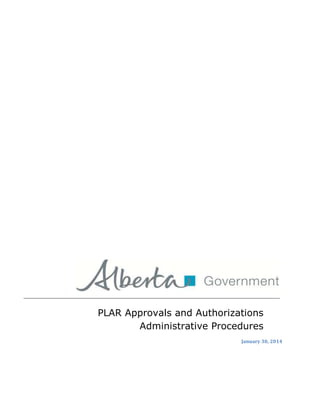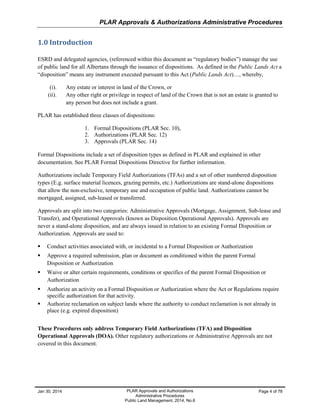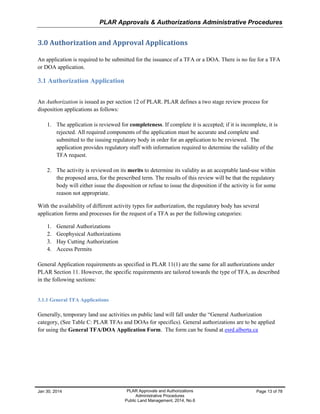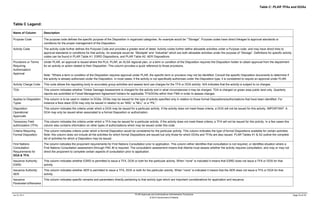This document outlines procedures for issuing authorizations and approvals for the use of public lands in Alberta. It discusses three classes of dispositions: formal dispositions, authorizations, and approvals. Authorizations allow temporary, non-exclusive use and include temporary field authorizations and other numbered disposition types. Approvals are issued in relation to an existing formal disposition or authorization and are used to conduct associated activities, approve required plans, waive requirements, or authorize specific activities. The document provides definitions and procedures for application, review, issuance, management, and allowable activities for temporary field authorizations and disposition operational approvals.













































































